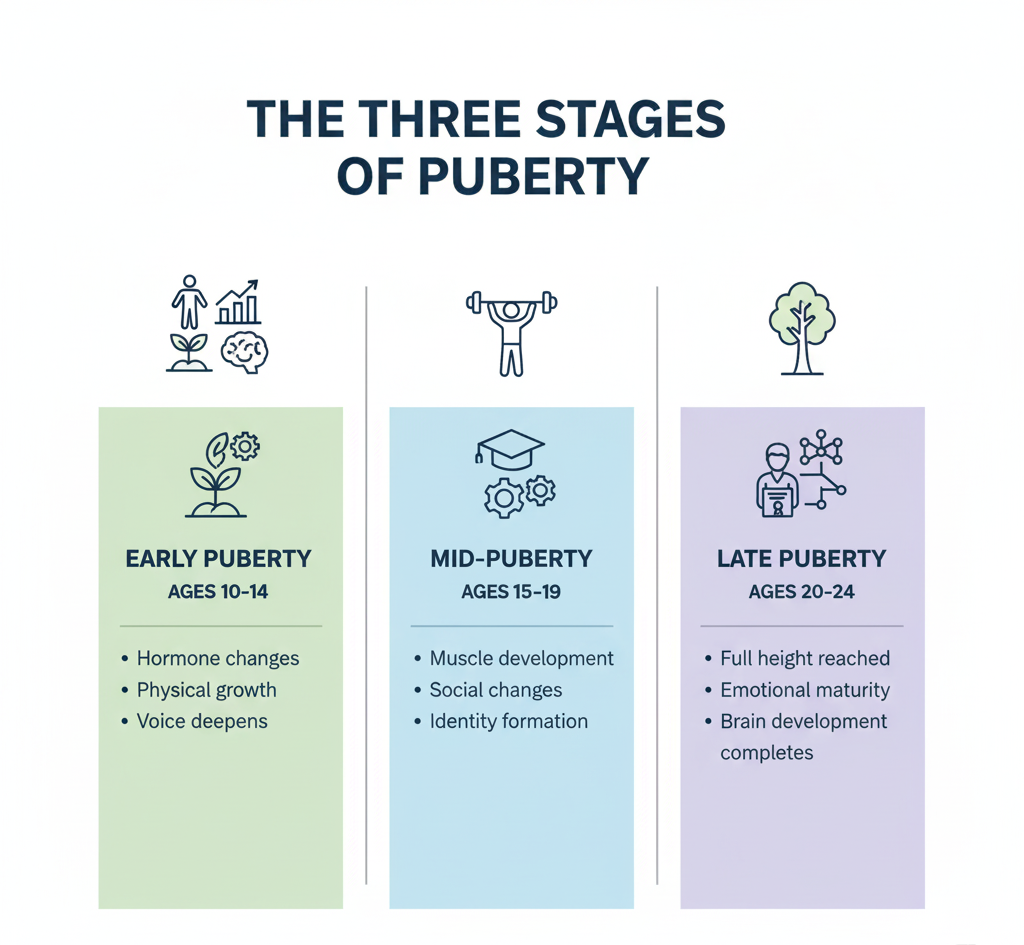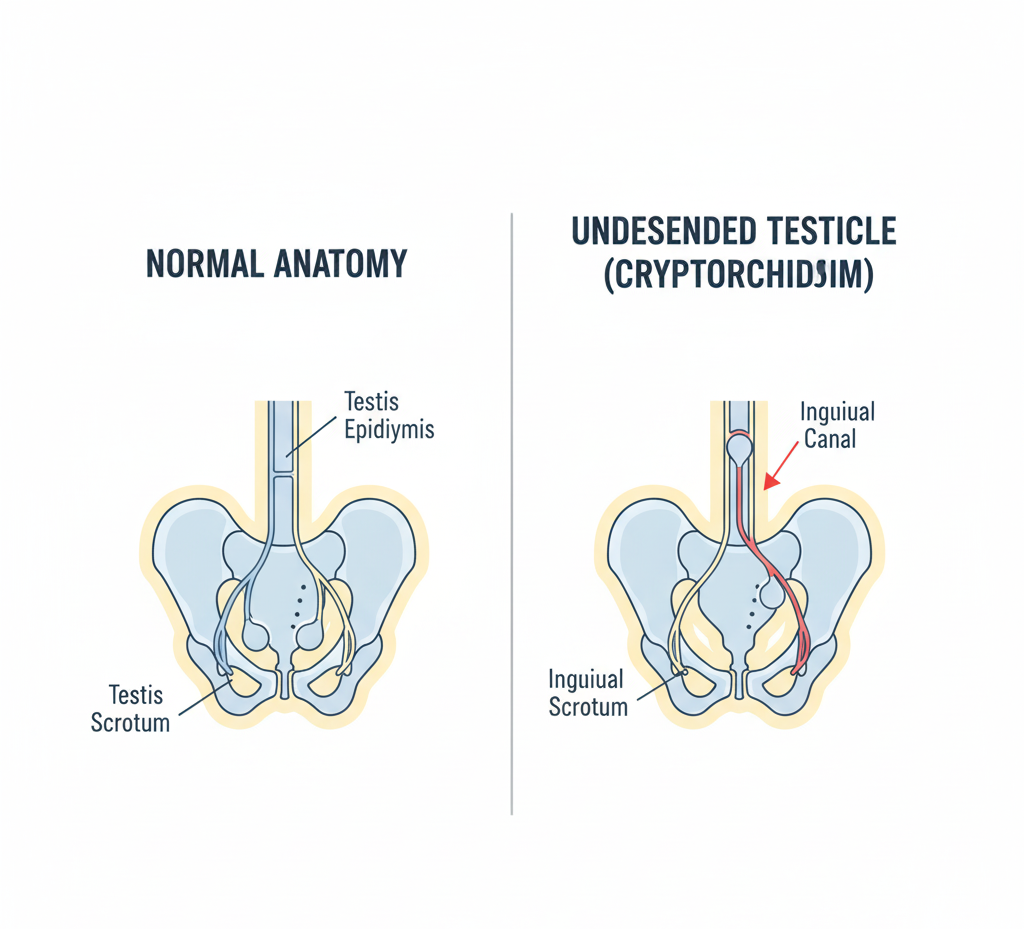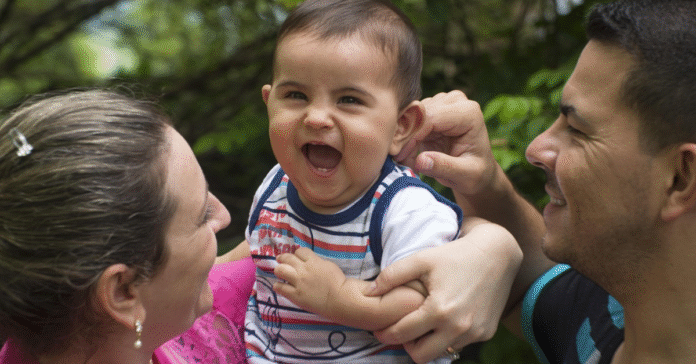Are you really worried about your son…”
“There is no one I feel comfortable asking. Should I call the pediatrician? Last week I picked up the phone to make an appointment, but I hung up because I felt too embarrassed.”
“Is something seriously wrong?”
“I do not know. Our three boys all look different down there, and I’m not sure what’s normal. I wish there was a way to know for sure… but I’m just too embarrassed to ask.”
This conversation between young mothers at a playgroup is more common than you might think.
Many parents today—both mothers and fathers—are not familiar with normal genital anatomy in boys, how these organs develop with age, or what complications to watch for. This lack of knowledge can lead to unnecessary worry about conditions that do not exist, causing stress and anxiety for the whole family.
That is why we have created this comprehensive guide to help you understand male genital development from birth through young adulthood. The information provided here is based on guidance from pediatric specialists and experts in sexual health.

How Development Begins
A baby’s organs begin forming during the first three months in the womb. During this time, the testicles develop near the kidneys and gradually move down through the pelvis into the scrotum. After birth, boys do not experience significant genital growth until around age 10.
Sexual development occurs during puberty, which is typically divided into three stages:
Early Stage: Ages 10-14
Middle Stage: Ages 15-19
Late Stage: Ages 20-24
As the testicles and penis develop, boys experience changes throughout their bodies and in their thoughts, emotions, and feelings. After age 10, secondary sexual characteristics begin appearing, including:
- Hair growth on the chest, back, and pubic area
- Development of the Adam’s apple
- Voice deepening
- Increased muscle mass
- Facial hair growth
These are entirely regular, natural changes. However, several lesser-known conditions worry many parents. Let us discuss these concerns.

Common Conditions Parents Should Know About

1. Undescended Testicles in Newborns
The testicles, which form near the kidneys, sometimes stop partway on their journey to the scrotum. This can leave one or both sides of the scrotum empty. When this happens, the scrotal sac feels flat or hollow. If you notice this, it is important to consult your pediatrician for evaluation and treatment options.

2. Hypospadias
Usually, the urethral opening is located at the tip of the penis. However, in some boys, this opening may be positioned differently—on the underside of the shaft, midway down, or at an angle. If you notice this condition, your doctor can discuss treatment options to address any functional concerns you may have.
3. Erection Before Urination
When a boy’s bladder is full, the pressure can cause the penis to become erect. Many parents see this and panic, thinking something is wrong. However, this is entirely normal and not a medical condition. Whether or not the penis becomes erect before urination is not an indicator of any problem.
4. Foreskin Issues
For uncircumcised boys, it is important to know that you do not need to retract the foreskin for cleaning until around age five, forcibly. The foreskin naturally separates from the head of the penis over time.
However, sometimes the opening at the tip of the foreskin can be tiny. This is called phimosis. When this happens, urine can collect between the foreskin and the glans, causing the foreskin to swell like a balloon. This condition is known as “ballooning.” If you notice urine dribbling or the foreskin swelling during urination, consult your pediatrician.
5. Fungal Infections
When the genital area stays moist, fungal infections can develop. This often happens when babies wear diapers for extended periods or when older boys wear damp underwear. Watch for redness, swelling, sores, or itching around the foreskin, penis, testicles, buttocks, or anal area. If these symptoms appear, seek medical attention.
6. Testicular Problems
After a child has mumps, the virus can sometimes cause testicular infection, leading to swelling and pain. If your son’s testicles become red, swollen, or painful, contact your doctor.
More urgently, if your son suddenly develops severe testicular pain, seek immediate medical attention. Two serious conditions cause sudden, severe pain:
Testicular Torsion: The testicle twists, cutting off its blood supply. If this is not treated quickly, the testicle can die.
Indirect Inguinal Hernia: Part of the intestine can push down into the groin or scrotum, causing swelling in the lower abdomen or testicles. This may also cause intestinal blockage.
Both conditions require emergency medical care.

7. Injuries
If your son’s penis is injured—whether from a zipper accident, animal bite, or being hit during play—it is essential to have a doctor examine the injury. Even minor-seeming injuries can require treatment to prevent complications.
Hygiene and Infection Prevention
After the age of 5, boys should clean their genital area thoroughly twice a day. The glands at the junction of the foreskin and the penis head produce a substance called smegma, which has a slight odor. If not cleaned regularly, this buildup can lead to infections.
One common condition is genital scabies, caused by tiny mites. These appear as small, itchy bumps on the penis and the surrounding area. Prevention is simple: keep the genital area and underwear clean and dry.
When washing underwear, you do not need harsh detergents or disinfectants. Regular laundry detergent is sufficient, though gentle, fragrance-free options work well for sensitive skin.

Urethritis
If your son develops painful inflammation at the urethral opening, take it seriously. This condition can result from bacterial infection and, if left untreated, may lead to urinary tract infections that can affect the kidneys. Prompt medical treatment is important.
Understanding Normal Variation
The age at which puberty begins, the rate of development, and the size of the genital organs vary considerably from child to child. Development depends on many factors, including nutrition, genetics, and hormones.
Just as apple trees do not produce identical apples, children in the same family will not develop at the same rate or in the same way. Comparing your children to each other—or to other children—is not helpful and can create unnecessary worry.

When to Seek Help
Do not let embarrassment prevent you from getting medical advice. Pediatricians and family doctors frequently encounter these concerns. They are trained to address your questions professionally and compassionately. Your child’s health is far more important than any momentary discomfort you might feel from asking questions.
Remember: knowledge is power. Understanding what is normal helps you recognize when something needs attention. Trust your instincts, ask questions, and do not hesitate to seek professional guidance when you are concerned about your son’s development.

